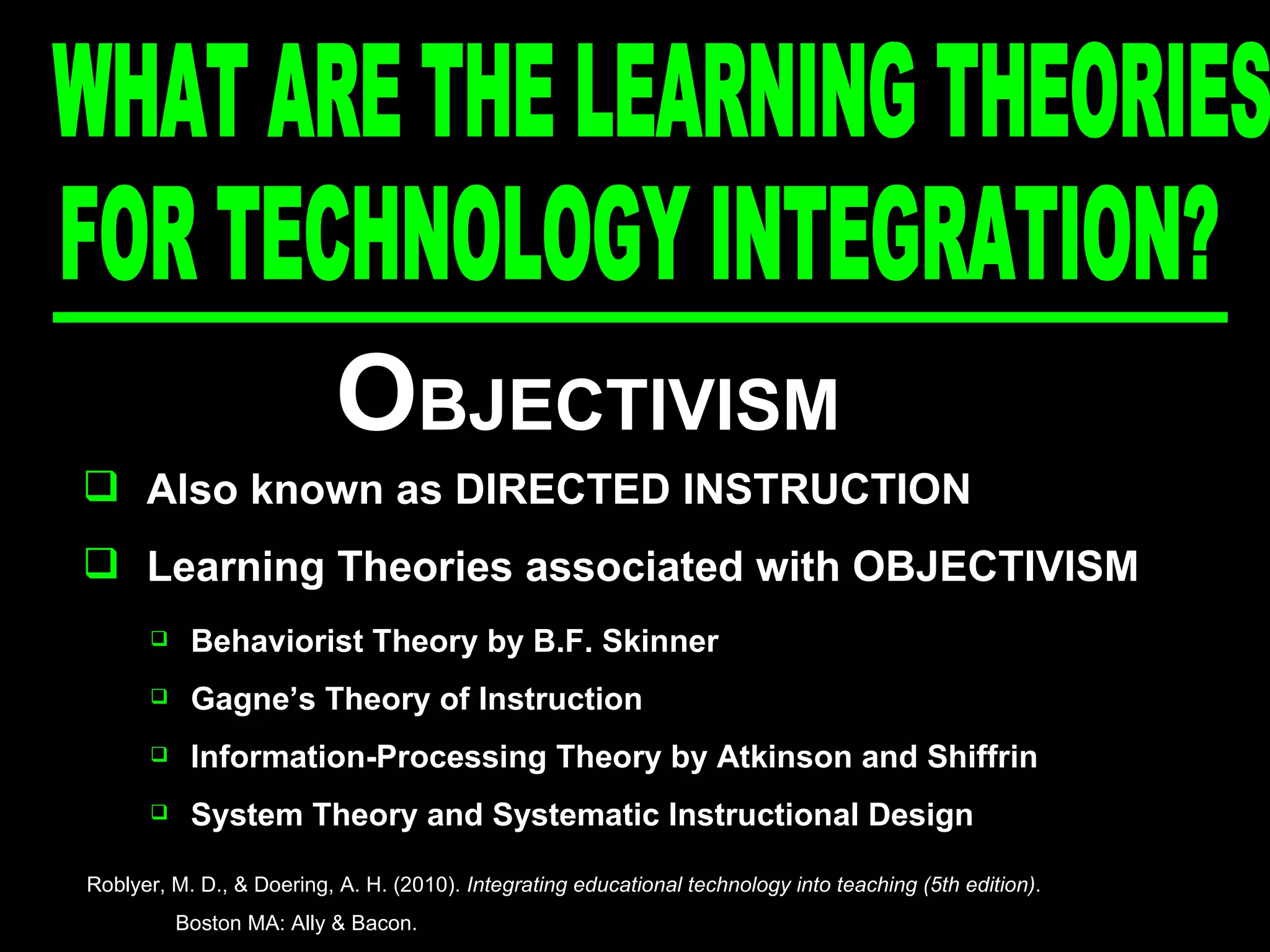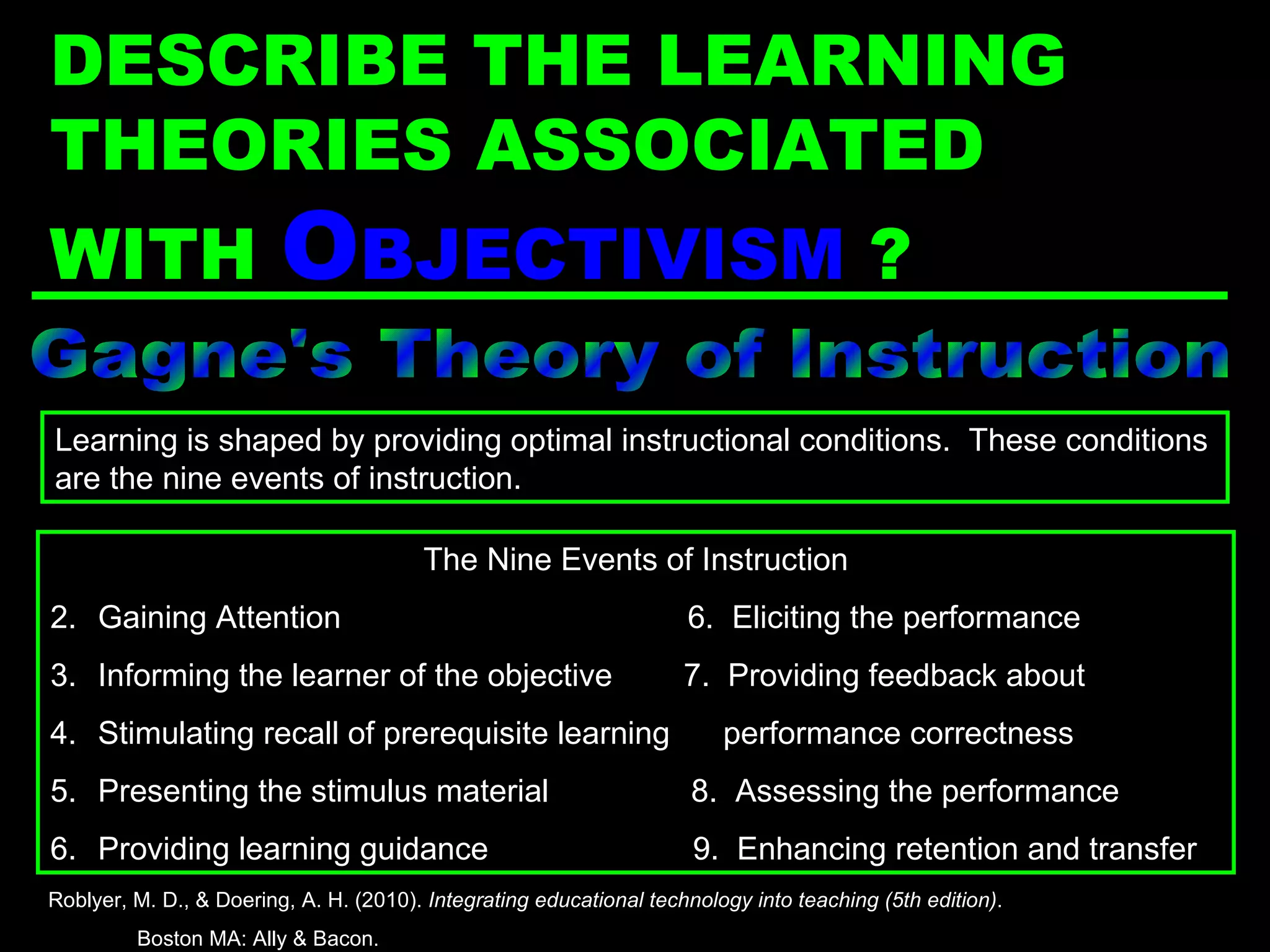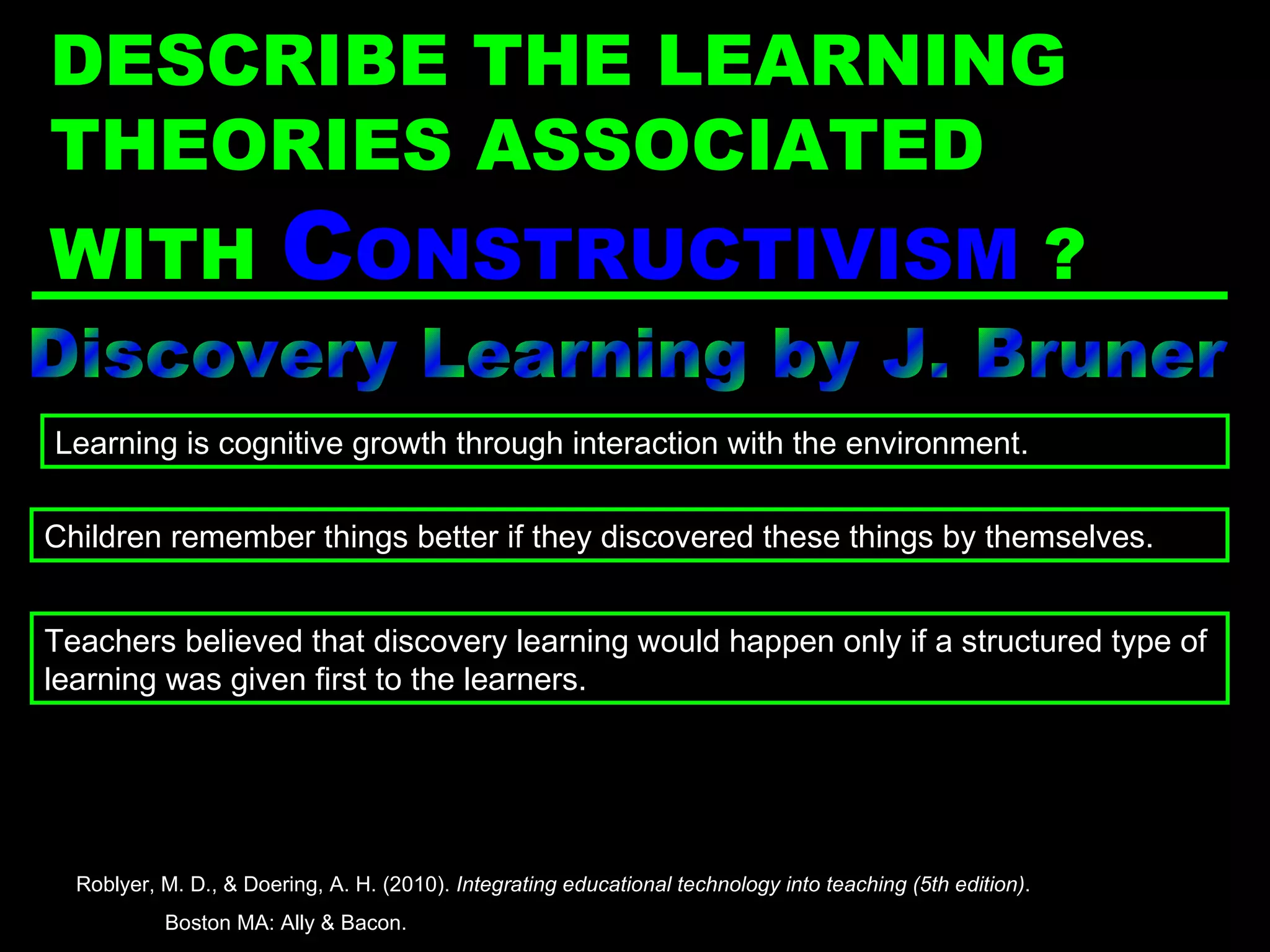The document discusses different learning theories that can be used for technology integration, including objectivism/directed instruction and constructivism. Objectivism theories include behaviorism, information processing theory, and systematic instructional design. Constructivism theories include social constructivism, scaffolding theory, discovery learning, and multiple intelligences. The document provides descriptions of each theory and guidance on when each approach might be best for technology integration.














